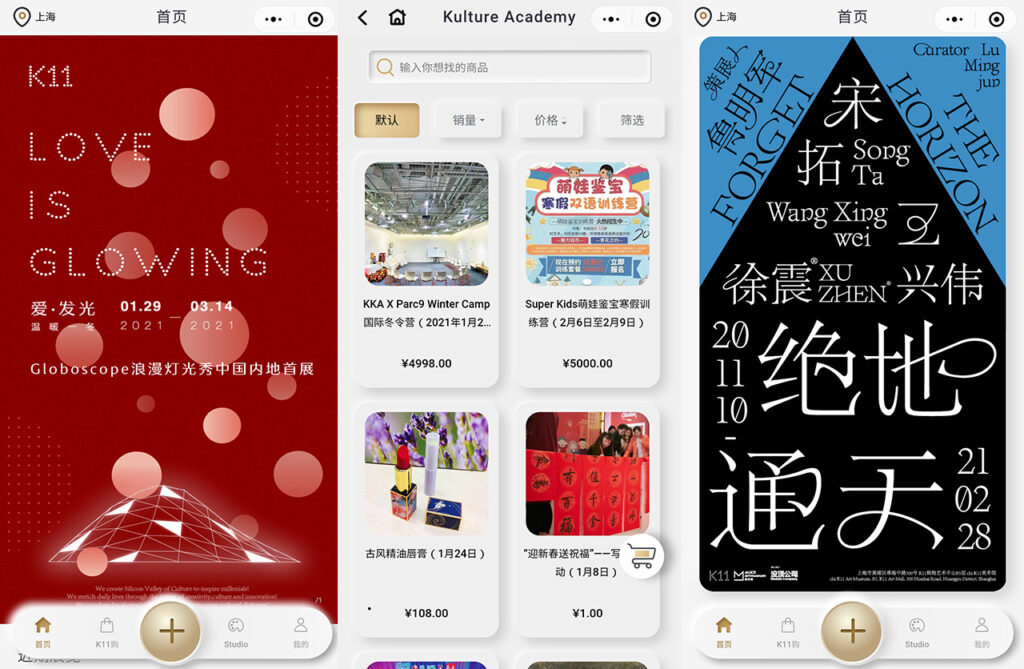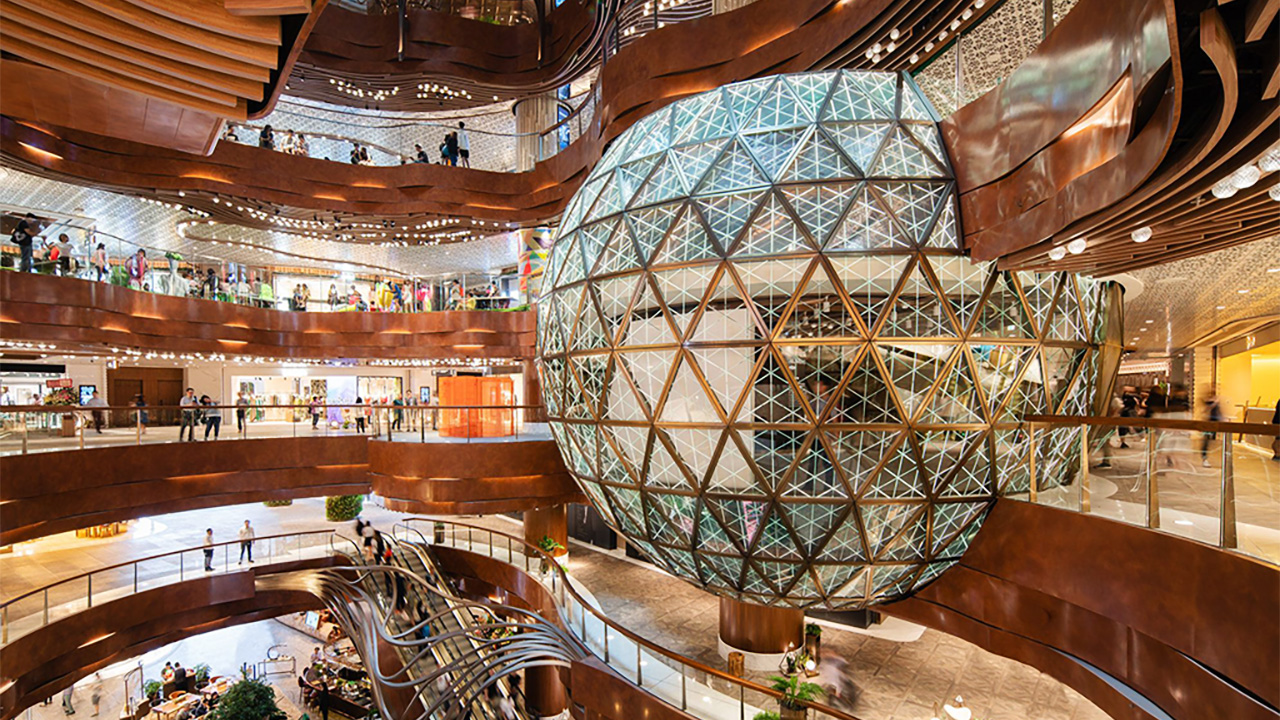K11 emerges from 2020 confident of the long-term sustainability of its retail model, one that has revolutionized what a “mall” in China can and should be since the first K11 opened in Hong Kong more than a decade ago. Crafting meticulously curated spaces in which shoppers simultaneously consume art and culture as part of a lifestyle, the company successfully spearheaded the concept of cultural-retail — its malls are considered “art playgrounds” — and can now count other locations in Shanghai, Guangzhou, and Wuhan.
A year of lockdowns, social distancing, and capacity limitations, however, posed serious challenges for the brand. Its response was to rapidly develop its online functionality, building out its selling capabilities and digital cultural programming. The result? K11 malls recorded sales growth above 50 percent in the second half of 2020.
Here are three key data points K11 shared with Jing Culture & Commerce and insight into what they indicate about a company aimed at reshaping China’s art and commerce landscape.
Overall China sales increased 34 percent year-on-year (July to December)
So-called “revenge consumption” was much hyped as a driving force behind China’s H2 retail spending. Yet, K11’s strong 2020 numbers are better understood by the appeal of exclusive and experiential shopping experiences after months of lockdown. For example, a visit to K11 Musea, the Hong Kong destination opened in 2019, offers visitors the enjoy an interactive game zone, stumble upon contemporary art placed throughout the 1.2 million square-foot space, and dine at 70 different restaurants.

K11’s cultural-retail destinations are dotted throughout the region, including in key cities such as Shanghai and Wuhan. Image: K11
Leading properties included Shenyang, Liaoning province, and Shanghai, which saw 49 percent and 50 percent year-on-year growth respectively.
1+ million K11 GO users
Launched in March, as the pandemic propelled the retail industry into a digital scramble, K11 GO acts as the functional arm of the company’s WeChat Mini Program, essentially a non-downloadable app that runs inside Tencent’s social media platform. It platforms art programming and select shopping opportunities, thereby becoming the central digital hub for K11’s customers, tenants, and cultural stakeholders.

K11 GO offers its million-plus users access to shopping opportunities and cultural programming. Image: K11 on WeChat
K11 GO gives users access to Kulture Academy, a range of art, design, and culinary classes. It also platforms 360-degree virtual art tours through its VR Art Exhibition program. In terms of shopping, the Mini Program has hosted more than 700 livestreams — an e-commerce strategy that saw exponential growth in 2020, resulting in sales of $5.4 million, a figure the company believes will continue to climb given sales between October and November doubled.
E-commerce sales grow 50 percent year-on-year
K11’s in-house experience was paired with a best-in-class offline-to-online strategy built around an app, K11 GO, and dynamic social media engagement. The company welcomed 6 million new followers across WeChat, Weibo, and Little Red Book in 2020, with in excess of 50 million interactions via posts, livestreams, educational videos, games, and more. “People are looking for inspiration from the virtual world as much as from the real world,” said a K11 spokesperson via email. “Social media is playing a very strategic and important role for any corporations looking to further enhance customer relations and experience.”
While many of these social engagements feed into K11’s e-commerce channels, the company’s loyalty program has been particularly successful in retaining high-value shoppers. Select customers are enrolled in a program granting membership points (or K Dollars) to be spent throughout K11’s properties — K11 Musea saw this customer relationship management system generate 65 percent increase in year-on-year sales over the Christmas period.



